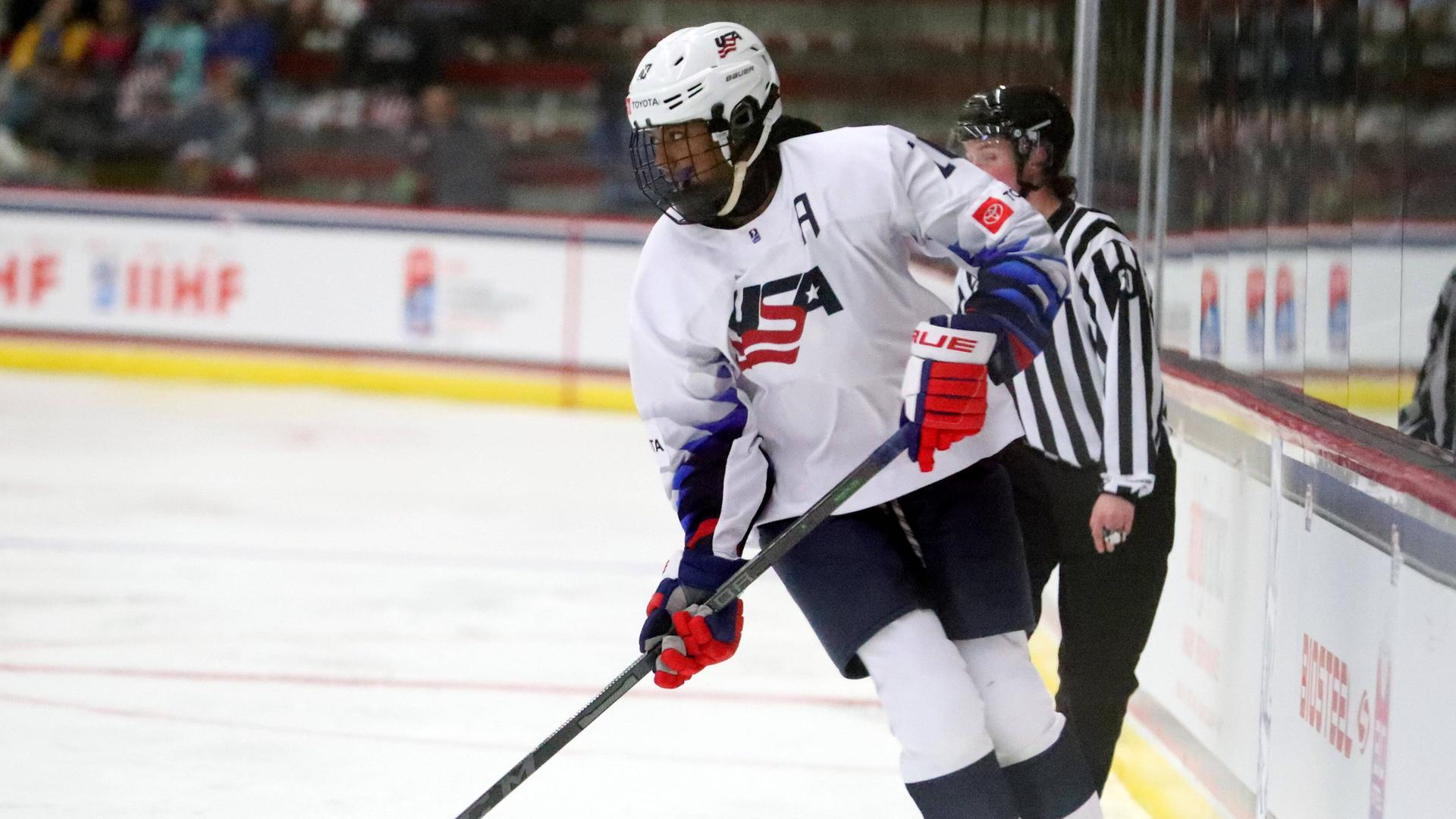
The first black national ice hockey player

Layla Edwards’ beginnings in hockey were like those of many other girls and boys. Her father played ice hockey, which is why he put his three children on ice skates early in Cleveland. Laila’s sister, Sheila, who is three years older than her, recalls:
“Unfortunately, she was five and her little sister was typical – very ambitious. I remember her wand technique was always very good. The older she got, the better she got, and at some point she surpassed me.”
Layla Edwards says her big dream was to become an ice skater – but her father insisted she take up ice hockey: “I was playing against boys for fun. But when I was 10 or 11, I realized I wanted more. Then I thought about this “Sports can take me far.”
The sport has already taken her far and earned the 19-year-old an entry in the ice hockey history book just a few days ago. In the friendly match against Canada, Layla Edwards became the first black woman to wear a US women’s national team jersey. “It’s a huge honor. I’m very proud. It would have been nice if someone had done it before me. I hope I can now be a role model for the next person and the person after that. Now that this wall has been broken down, I hope a lot of people will come forward.”
Team USA: Overabundance of titles and lack of diversity
The first women’s ice hockey world championship was held in Ottawa in 1990, and Canada beat the United States 5-2 in the final. There were about 6,000 registered players in America at the time, but the number has now risen to 88,000. The United States, along with Canada, the world’s dominant nation, has won 10 World Cup titles and two gold medals at the Winter Olympics, but is still lacking as much as What it was in 1990: diversity.
Ice hockey is still considered a white sport for both men and women. Even in the National Hockey League, the world’s most powerful ice hockey league, there are only about 30 black players out of nearly 800 currently. The percentage of black people is in the low single digits. Lily Edwards also felt this:
“There’s never anyone really like you on the ice rinks or the locker rooms. It was always a little uncomfortable for me, and you notice how people whisper when they see you, or you walk into the hall and ask where the locker rooms are.”…and you get… Answer: The basketball courts are there. “I just said, ‘I’m here to play ice hockey.’
Her idol was Blake Bolden. In 2012, she was on the verge of breaking the so-called “color barrier” in the United States. When the defender was invited to the training camp to prepare for the World Cup, but he was excluded from the squad shortly before the tournament. A year later the same thing happened to her again.
Edwards knows she is now the person young black players will look up to because she has shown that it is possible to play as a black woman in a US national jersey. That’s why her message is: “If you’re hesitant because it’s frustrating that you don’t see a lot of people who look like you, do it anyway. We have to start somewhere, and one person makes a difference.”
New notoriety not only through its US debut
That Edwards has become so popular in recent days is not only due to her international debut, but also to Travis Kelce. The professional football player for the Super Bowl champion Kansas City Chiefs and current boyfriend of Taylor Swift comes from the same Cleveland suburb where Edwards lives. Kelsey has a weekly podcast with his brother that is listened to by hundreds of thousands of people. In mid-October, Leila Edwards reported:
“Layla Edwards, one of our own from Cleveland Heights who currently plays for the University of Wisconsin, will become the first black woman to wear a U.S. national team jersey. The U.S. will play a friendly series against Canada in November.”

“Professional reader. Award-winning gamer. Zombie buff. Social media junkie. Bacon maven. Web scholar.”
